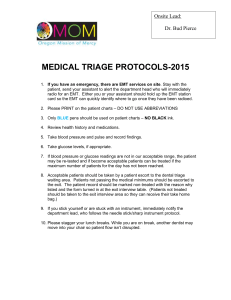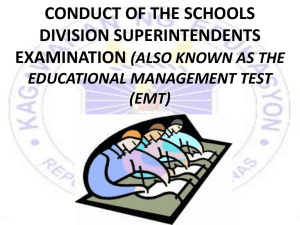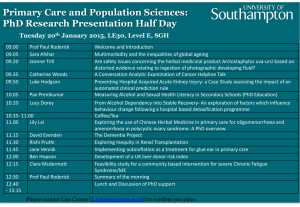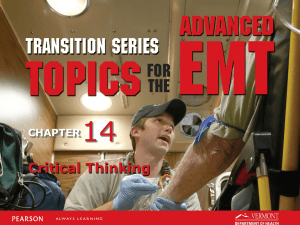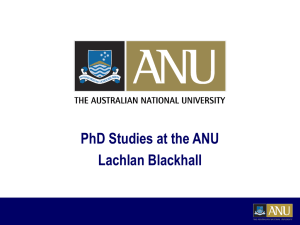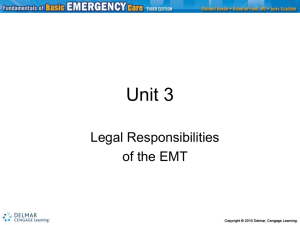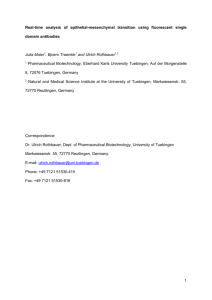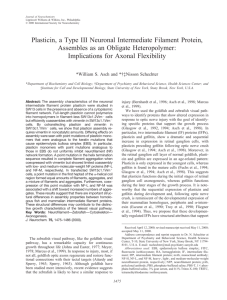Find out more
advertisement
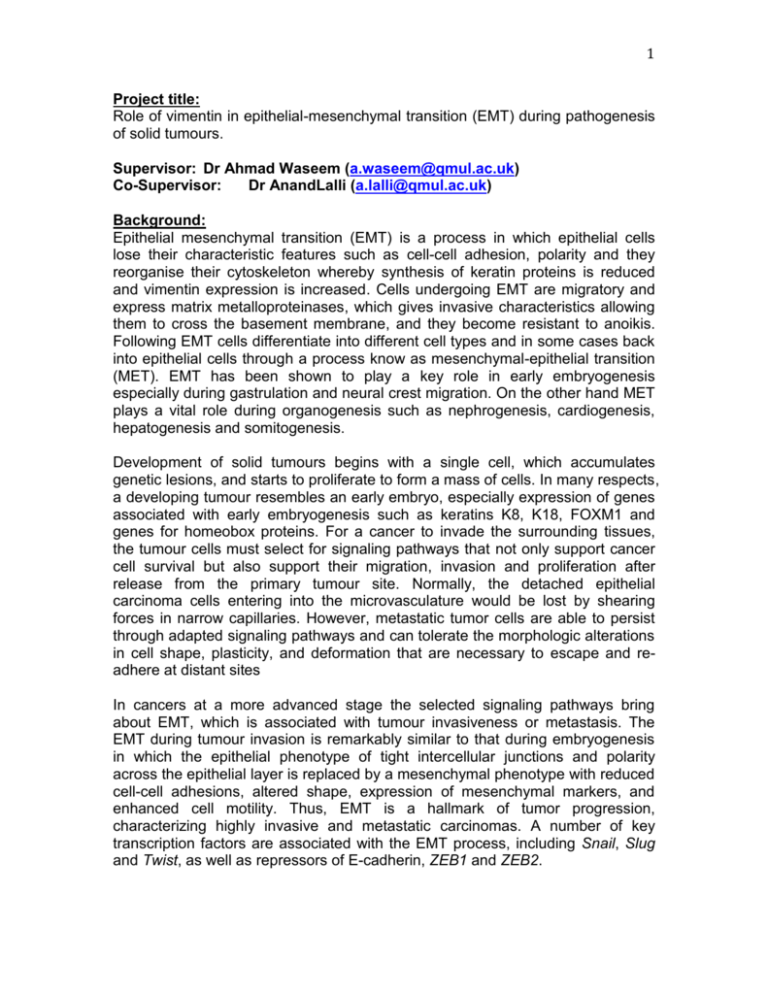
1 Project title: Role of vimentin in epithelial-mesenchymal transition (EMT) during pathogenesis of solid tumours. Supervisor: Dr Ahmad Waseem (a.waseem@qmul.ac.uk) Co-Supervisor: Dr AnandLalli (a.lalli@qmul.ac.uk) Background: Epithelial mesenchymal transition (EMT) is a process in which epithelial cells lose their characteristic features such as cell-cell adhesion, polarity and they reorganise their cytoskeleton whereby synthesis of keratin proteins is reduced and vimentin expression is increased. Cells undergoing EMT are migratory and express matrix metalloproteinases, which gives invasive characteristics allowing them to cross the basement membrane, and they become resistant to anoikis. Following EMT cells differentiate into different cell types and in some cases back into epithelial cells through a process know as mesenchymal-epithelial transition (MET). EMT has been shown to play a key role in early embryogenesis especially during gastrulation and neural crest migration. On the other hand MET plays a vital role during organogenesis such as nephrogenesis, cardiogenesis, hepatogenesis and somitogenesis. Development of solid tumours begins with a single cell, which accumulates genetic lesions, and starts to proliferate to form a mass of cells. In many respects, a developing tumour resembles an early embryo, especially expression of genes associated with early embryogenesis such as keratins K8, K18, FOXM1 and genes for homeobox proteins. For a cancer to invade the surrounding tissues, the tumour cells must select for signaling pathways that not only support cancer cell survival but also support their migration, invasion and proliferation after release from the primary tumour site. Normally, the detached epithelial carcinoma cells entering into the microvasculature would be lost by shearing forces in narrow capillaries. However, metastatic tumor cells are able to persist through adapted signaling pathways and can tolerate the morphologic alterations in cell shape, plasticity, and deformation that are necessary to escape and readhere at distant sites In cancers at a more advanced stage the selected signaling pathways bring about EMT, which is associated with tumour invasiveness or metastasis. The EMT during tumour invasion is remarkably similar to that during embryogenesis in which the epithelial phenotype of tight intercellular junctions and polarity across the epithelial layer is replaced by a mesenchymal phenotype with reduced cell-cell adhesions, altered shape, expression of mesenchymal markers, and enhanced cell motility. Thus, EMT is a hallmark of tumor progression, characterizing highly invasive and metastatic carcinomas. A number of key transcription factors are associated with the EMT process, including Snail, Slug and Twist, as well as repressors of E-cadherin, ZEB1 and ZEB2. 2 The most significant biomarker of mesenchemal tissue is the expression of vimentin, a type III intermediate filament protein, which forms homopolymeric cytoplasmic filaments. Several studies have shown that vimentin expression is increased in cancer tissues undergoing EMT whereas keratin expression is reduced. For example, squamous carcinoma cells expressing low levels of keratin K19 are more invasive, but this is decreased by ectopic K19 expression. In addition, K14 downregulation has been documented in a cervical cancer. We have shown that vimentin expression during EMT is not a mere biomarker instead it is responsible for reducing keratin expression. Using siRNA to inhibit vimentin expression in invasive and tumorigenic head and neck squamous carcinoma (HNSCC) cells, we have shown inhibition of cell growth and motility in vitro, as well as in vivo tumour growth in athymic mice. Furthermore, we found that small tumours developing from vimentin-knockdown cells showed features of epithelial re-differentiation. This was further supported by our observation that keratin promoter activity was increased in vimentin-knockdown cells. Although the underlying mechanism by which vimentin suppression inhibits tumour growth and enhances MET is not known, it certainly has potential for a future therapeutic approach. A detailed understanding of the mechanisms regulating EMT (and MET) will identify targets for therapeutic intervention and help to control aggressive malignant cancers. Aims of the study: This project is based on the hypothesis that vimentin expression plays an active role in inducing EMT during oncogenesis. We have shown that vimentin suppresses keratin expression proteins and drives metastasis. The specific aims of the project are: 1. To test whether vimentin filament formation in the cytoplasm is the trigger for EMT. 2. To identify the vimentin domain(s) necessary to suppress keratin expression and induce EMT. 3. To Test whether vimentin expression induces invasiveness in keratinocytes using organotypical cultures. 4. To identify genes those are influenced by vimentin expression in epithelial cells. Research training to be provided during the project: The student working on this project will be registered for PhD with the Queen Mary Doctoral College with two supervisors, a primary supervisor, Dr Ahmad Waseem, and a co-supervisor, Dr Anand Lalli. The role of the co-supervisor will be to provide research supervision in the absence of the primary supervisor. The PhD student working on this project will receive two main forms of research training: Training specific to the project: The candidate will be undertaking the most modern cell and molecular biology techniques such as cloning and expression of eukaryotic genes, retroviral induced gene transfer, quantitative cell 3 migration and proliferation, gene expression methods including absolute quantitative PCR, western blotting, ELISA and organotypic cultures. Genome wide gene expression and associated statistical analysis will be carried out at the Genome Centre based at Barts campus. The supervisors will provide this form of research training. Training in research skills: In addition, the student will also receive training in transferable skills essential to becoming a competent researcher. This type of training will be provided by a group of lecturers as a core course to the postgraduate research programme, compulsory to all postgraduate students. This will include an introductory course covering the role of supervisors, moral and ethical issues, the law and basic skills (experimental design and scientific presentation etc). This will be followed by a series of short courses on animals in research, health and safety issues and a molecular biology workshop. As part of the core training, the student will attend a detailed course on communication skills including IT, a short course on statistics and practical training in writing a thesis and grant proposals, as well as making formal presentations. PhD students are also required to present posters and give oral presentations at the Institute level (PhD day and William Harvey day) in the first year, and at national and international meetings in later years of their research training. Research infrastructure: The PhD student will be based in the Blizard institute, a state of the art research facility located at the Royal London Hospital campus, Whitechapel (London). The institute is exceptionally well equipped for cell and molecular biology research including cloning, mRNA and protein expression and tissue culture. There are also core facilities run by specialists, but available to all researchers, such as high-speed centrifugation including two ultracentrifuges, imaging services and FACS facilities. The research laboratories are run by six laboratory managers who deal with issues such as freezer breakdown, equipment repair and calibration, health and safety, radiation protection, consumable supplies etc. Genomics and proteomics facilities are also available within Queen Mary at the Barts campus. All the core facilities are available to researchers on pay as you go basis, which makes the services sustainable for our institute. Research environment: The primary supervisor of this project is based in the Blizard Institute, which has a unique design where there are no barriers between disciplines, as well as basic scientists and clinicians, which creates an excellent environment for PhD students to learn and grow from others experiences. The Cancer Research PhD group meets on a regular basis for Journal Club that gives all an opportunity to discuss their research as well as laboratory issues. Our Institute has an excellent programme of encouraging PhD students to realise their full potential. The Institute organizes the annual PhD day, which gives an opportunity to all PhD students registered within the Institute to present their work 4 either orally or through a poster. To incentivise the PhD programme, the Institute gives prizes for the best presentation and the best poster. Supervisory team: Dr Waseem has an excellent track record of supervising PhD students; all past 7 PhD students have completed their PhDs in FOUR years and have published papers in high impact journals. Dr Lalli is a newly appointed Clinical Academic Lecturer and this will be his 1st PhD supervision.

